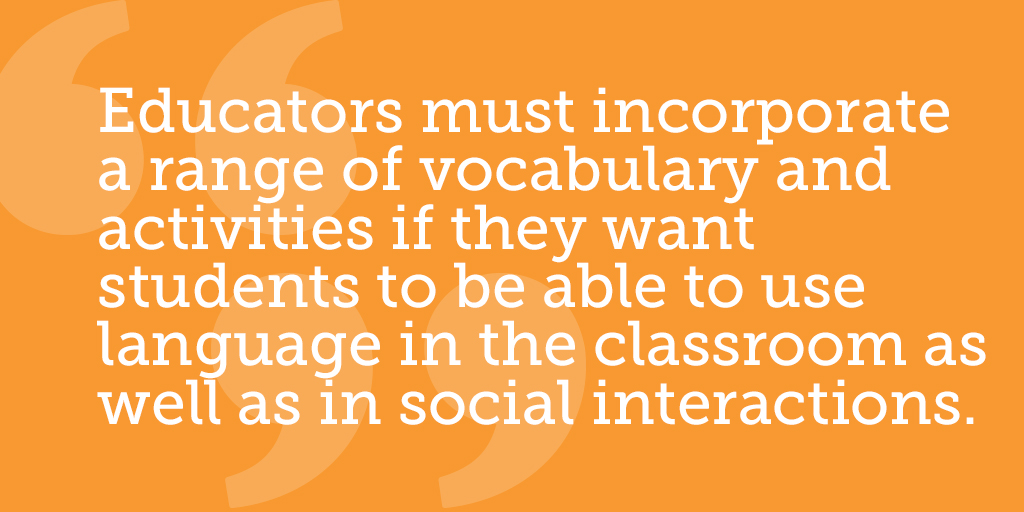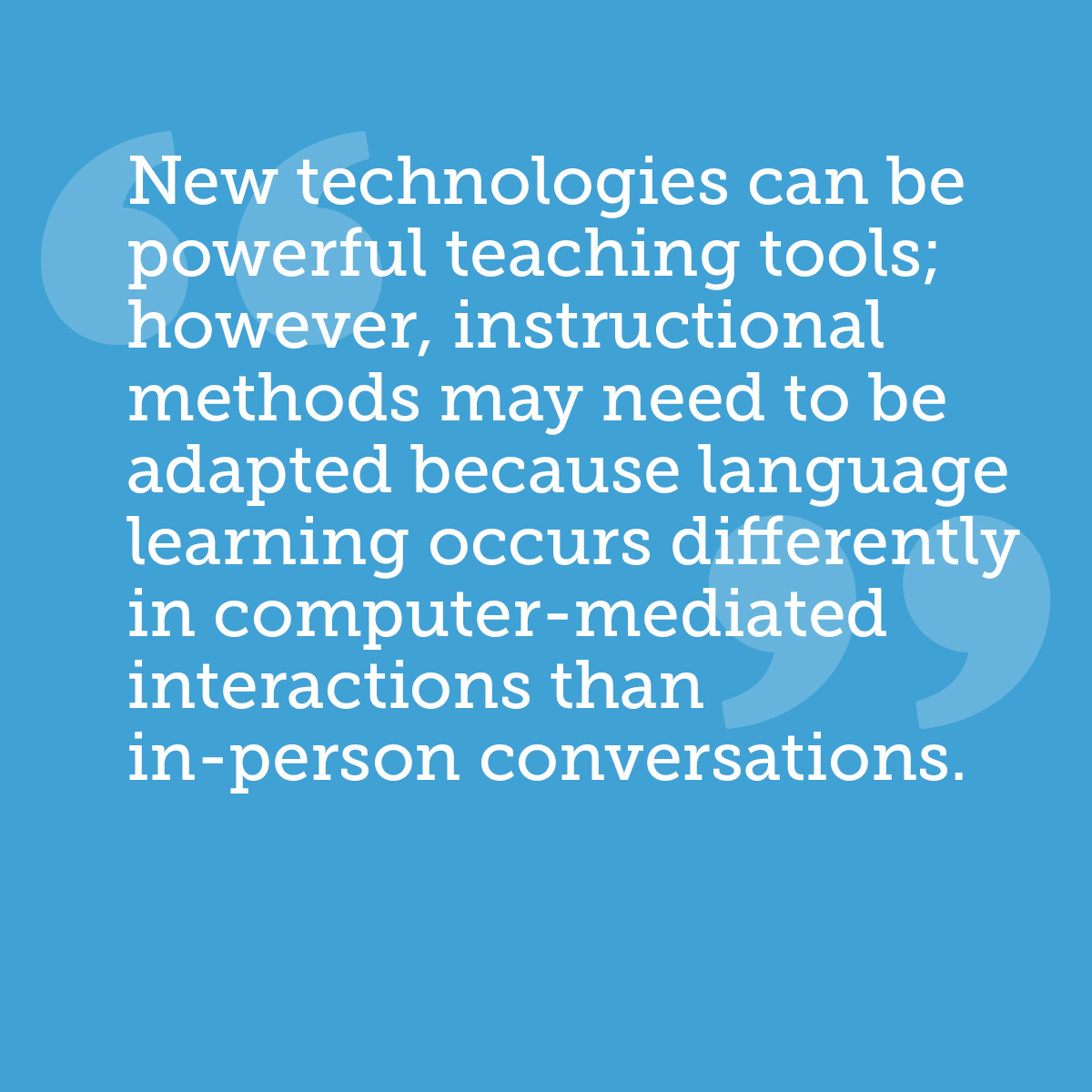
How do people learn second languages, and which teaching methods are effective?
In today’s globalized world, communication often requires knowing more than one language. Language learning is thus an increasingly important focus in education, whether it’s English as a Second Language (ESL) for students who are not native English speakers, or Foreign Language courses to prepare students for future opportunities.
There are three major theories of how humans acquire language. Behaviorism (B.F. Skinner) focuses on how language is learned through imitation, practice, and reinforcement. In contrast, nativism (Noam Chomsky) suggests that humans are born with an innate understanding of grammar and frameworks for language. Sociocultural or social interactionist theory (Lev Vygotsky) sees learning as a social process that takes place in interactions with other people. While scholars continue to debate these theories, researchers have used them as a starting point to identify and study effective techniques for teaching languages.
The section below highlights key findings from the research on language learning and language teaching.
Absorbing language from one’s surroundings as a young child is a different process than learning language intentionally in a classroom.[i] Age, education level, affective factors (such as motivation and self-confidence), and other characteristics also affect language learning.[ii] Instructional approaches that are effective for one type of student and learning context may not work as well with another learner.
 Students need different language skills for different purposes.
Students need different language skills for different purposes.While the language skills required for social activities and informal conversation can emerge in one to two years, it may take from four to seven years to reach the level needed to participate in academic activities like analyzing complicated texts or writing persuasive essays. [iii] Educators must incorporate a range of vocabulary and activities if they want students to be able to use language in the classroom as well as in social interactions.
Language forms are the grammatical elements of language, such as vocabulary, subject-verb agreement, and prepositional phrases.[v] Language functions are the ways language is used to communicate and create meaning, such as describing people or asking questions.[vi] Both should be included in language instruction.[vii] For example, students learning about colors need to know words for different colors and how to use adjectives (forms), as well as how to ask questions and share information about the color of objects they see (functions).
 Explicit feedback directly addresses and corrects errors in language use, while implicit feedback demonstrates correct usage by recasting or rephrasing what a student said in the right way.[viii] Some studies support an intermediate approach that makes lessons clear while avoiding the stress of focusing exclusively on mistakes.[ix] For instance, instructors can use explicit recasts, where a student’s language is restated with a single correction clearly emphasized.
Explicit feedback directly addresses and corrects errors in language use, while implicit feedback demonstrates correct usage by recasting or rephrasing what a student said in the right way.[viii] Some studies support an intermediate approach that makes lessons clear while avoiding the stress of focusing exclusively on mistakes.[ix] For instance, instructors can use explicit recasts, where a student’s language is restated with a single correction clearly emphasized.
Traditionally, students learned languages using face-to-face conversation and printed texts, but today students need to be digitally literate and able to communicate using a wide range of media, each of which has its own style, vocabulary, and approach to language use.[x] New technologies can be powerful teaching tools; however, instructional methods may need to be adapted because language learning occurs differently in computer-mediated interactions than in-person conversations.[xi]
Explore Language Learning on the Visualization.
Citations
[i] Krashen, Stephen. (1982). Principles and practice in second language acquisition. Vol. 2. Pergamon: Oxford. Ellis, Rod. (2003). Task-based language learning and teaching. Oxford University Press. Doughty, Catherine and Jessica Williams. (1998). Focus on form in classroom second language acquisition. Cambridge University Press.
[ii] Judie Haynes. (2007). “Key Concepts of Second-Language Acquisition,” in Getting Started with English Language Learners.
[iii] Collier, Virginia P. (1987). “Age and rate of acquisition of second language for academic purposes.” TESOL quarterly 21.4: 617641. Cummins, Jim. (1999). “BICS and CALP: Clarifying the Distinction.” Hakuta, K., Butler, Y. G., & Witt, D. (2000). “How long does it take English learners to attain proficiency?” The University of California Linguistic Minority Research Institute. Policy report 20001.
[iv] A simple overview of the difference between language forms and functions can be found in: Oregon Department of Education. (2009–2010). “English Language Proficiency.” Oregon Standards Newspaper.
[v] Doughty, Catherine and Jessica Williams. (1998). Focus on form in classroom second language acquisition. Cambridge University Press.
[vi] Schleppegrell, M. J. (2004). The language of schooling: A functional linguistics perspective. Routledge.
Schleppegrell, M. J. (2012). “Systemic functional linguistics: Exploring meaning in language.” The Routledge handbook of discourse analysis, 2134.
[vii] Spada, N, Lightbown, PM. (2008). “Form-focused instruction: Isolated or integrated?” TESOL QUART.
Toth, PD. (2008). “Teacher and learner-led discourse in taskbased grammar instruction: Providing procedural assistance for L2…” LANG LEARN.
Dekeyser, RM. (2005). “What makes learning second-language grammar difficult? A review of issues” LANG LEARN.
Aski, JM. (2005). “Alternatives to mechanical drills for the early stages of language practice in foreign language textbooks” FOREIGN LANG ANN.
De La fuente, MJ. (2006). “Classroom L2 vocabulary acquisition: investigating the role of pedagogical tasks and form focused instruction.” LANG TEACH RES.
Ellis, R. (2006). “Current issues in the teaching of grammar: An SLA perspective” TESOL QUART
[viii] Li, SF. (2010). The Effectiveness of Corrective Feedback in SLA: A MetaAnalysis. LANG LEARN.
[ix] Sheen Y. (2006). “Exploring the relationship between characteristics of recasts and learner uptake” LANG TEACH RES.
Nassaji H. (2009). “Effects of Recasts and Elicitations in Dyadic Interaction and the Role of Feedback Explicitness”. LANG LEARN.
[x] Kern, R. (2006). “Perspectives on technology in learning and teaching languages” TESOL QUART.
[xi] Lai C, Zhao Y. (2006). “Noticing and text-based chat” LANG LEARN TECHNOL.
Yamada M. (2009). “The role of social presence in learner-centered communicative language learning using synchronous computer-mediated…” COMPUT EDUC.
Jepson, K. (2005). “Conversations - and negotiated interaction - in text and voice chat rooms.” LANG LEARN TECHNOL.